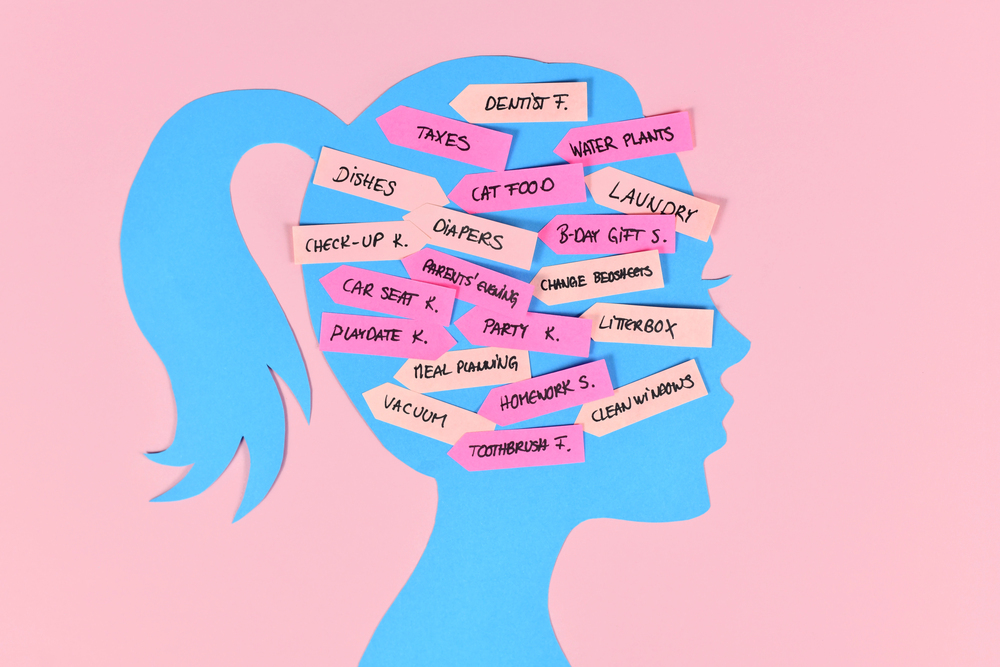Feeling like you’re the one who keeps track of everything at home? From appointments to groceries, the invisible mental load can quietly drain your energy and cause tension in relationships. This post looks at what the mental load really is, how it affects couples, and how to start sharing it without turning it into another argument.

Many couples I meet in therapy say the same thing. One person keeps the “list” in their head. This includes groceries, school forms, birthdays, appointments, reminders, and all the follow-up. It is the invisible work that keeps a relationship running, and it can be exhausting. Over time, this often leads to quiet resentment and a growing sense of disconnection.
Let’s look at what the mental load really means, how it affects relationships, and how you can start sharing it without turning it into another fight.
The mental load is the ongoing planning, remembering, and anticipating behind everyday life. It is not just about doing the tasks; it is the mental energy that goes into making sure everything happens.
When one partner carries most of that work, the imbalance can lead to stress, frustration, and emotional distance. Over time, one person feels unseen, while the other feels micromanaged or misunderstood.
You might be holding too much if you:
If this sounds familiar, you are not alone. Many couples in South Florida describe this same quiet pressure during therapy sessions. The good news is that it can change with honest communication and a shared plan.
Here is a practical approach that helps couples shift from frustration to teamwork.
Start by writing everything you both do. One list for visible tasks like cooking, cleaning, or errands. Another for invisible tasks like remembering birthdays, managing appointments, or planning meals.
Group each task into daily, weekly, or monthly categories. This helps you see where time and energy are going.
Each person takes full responsibility for certain areas — from planning to completion. No reminders. No checking in. Let ownership stay with the person who agreed to handle it.
Set aside fifteen minutes each week to talk about what worked and what needs adjustment. Keep it calm and practical.
Define expectations. If dinner means food on the table by seven, say it. Clarity prevents frustration later.
Try this approach: “I feel overloaded by how much I plan. Can we divide the tasks so we both know what we are handling.”
Balance takes time. There will be missed steps and small frustrations. Focus on progress, not perfection.
If things start to feel uneven again, do not give up. Look for the reason.
Adjust one thing at a time. Swap a few tasks or simplify routines. Remember, the goal is to keep teamwork at the center of the relationship.
Big life transitions like a new baby, job change, move, or illness can shift balance. When that happens, pause and reassign responsibilities. Keep the weekly check in, even if it is short. It helps both partners stay grounded when life starts to feel a little overwhelming.
If the same conversations turn into the same arguments, therapy can help you break that pattern. Working with a therapist gives both partners a safe space to map out the mental load, share expectations, and learn how to communicate more clearly.
It is not about blame. It is about understanding each other’s needs and creating a partnership that feels fair and supportive.
What if my partner says, just tell me what to do?
That still leaves the mental planning on you. Ask them to take full ownership of one area instead. Start small and build from there.
What if the task is done but not how I would do it?
Agree on the minimum standard for what good enough looks like. If it meets that, let it be. Control can easily turn into criticism.
What if I already feel resentful?
Say it plainly. “I have been carrying a lot, and I am tired. I want us to fix this together.” Then focus on one next step instead of everything at once.
If you are ready to make lasting changes in your relationship, I can help. Together, we can create a plan that fits your life, your home, and your goals. You do not have to carry it all alone.
Book a 15-minute free consultation or reach out to me to learn how therapy can help you build balance, communication, and emotional connection.